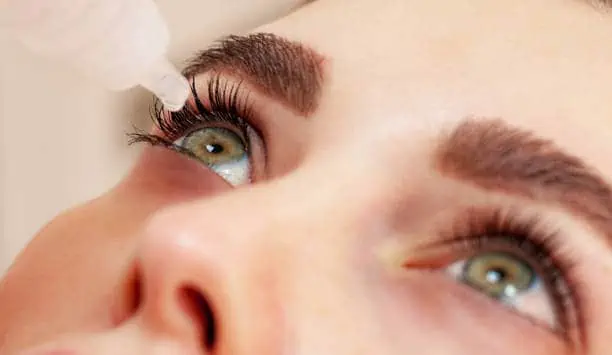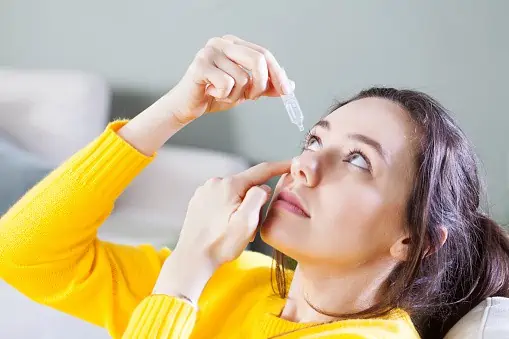If you’ve ever been prescribed Xiidra for your dry eye, you might be wondering about the potential side effects. After all, no one wants to experience any discomfort after taking medication. Fortunately, the side effects of Xiidra are relatively minor and can be easily managed. Let’s take a closer look at the possible side effects of using this medication.
What is Xiidra Eye Drop?
Xiidra is an ophthalmic solution used to treat patients suffering from dry eye disease. It works by blocking certain chemicals responsible for inflammation within the eyes. As such, it relieves dry eye disease symptoms, such as redness and irritation.
The Benefits of Xiidra
There are many benefits associated with using Xiidra for treating dry eyes. It provides a fast-acting relief that you won’t need to wait to take effect. Unlike other oral medications that treat this condition. Furthermore, studies have shown positive outcomes using the medicine.
Most patients experienced ongoing lifitegrast treatment six months post-index, with a noticeable reduction in overall treatment burden. Dramatic improvement in signs and symptoms associated with dry eye disease (DED) was evident as early as three months after initiating the lifitegrast treatment and continued up to 12 months post.
This demonstrates that beyond providing short-term symptom relief, the lifitegrast therapy is also effective in mitigating more chronic effects of DED over time.
How Does Xiidra Work?
Xiidra works by preventing inflammation in the eye caused by abnormal immune responses. It does this by blocking certain proteins called lymphocytes from entering the area around your eyes. By reducing inflammation, Xiidra can help provide relief from the discomfort associated with dry eyes.
Common Xiidra Side Effects
The most common side effects of Xiidra Eye Drops include:
- Eye irritation and Redness
- Blurred visions
- Headache and Dizziness
- Dysgeusia (Metallic Taste)
- Redness of the Eyes
- Sinusitis (Sinus Infection)
- Watery Eyes
Eye Irritation
The most common side effect of using Xiidra is eye irritation. This is caused by inflammation in the eye. It is a normal reaction that helps treat the underlying cause of your eye dryness. However, if your eyes appear red or irritated after taking Xiidra, you may want to talk to your doctor about switching to another treatment option.
Blurred Vision
This can be caused by a number of different factors, including improper dosage or an allergic reaction to the medication itself. If you experience blurred vision after starting Xiidra, contact your doctor immediately. They may need to adjust your dosage or switch you to another treatment option altogether.
Headache and Dizziness
Xiidra can also cause headaches and dizziness in some patients. These symptoms usually occur when taking more than the recommended dose. The side effect should subside within a few hours after ingestion.
Dysgeusia (Metallic Taste)
One of the more common side effects of using Xiidra is dysgeusia or an altered sense of taste. Patients may experience a metallic taste in their mouth after taking Xiidra for several days. This is usually temporary and should go away as your body adjusts to using the medication.
Redness of the Eyes
This occurs because Xiidra is an anti-inflammatory medication. It reduces inflammation in the eyes and surrounding tissue. The Redness should resolve itself within a few days.
Sinusitis (Sinus Infection)
Xiidra can also increase your risk of sinusitis or sinus infection. Symptoms include pain or pressure in the face, headaches, and a stuffy nose. If left untreated, sinus infections can lead to severe complications such as meningitis or sepsis.
Watery Eyes
This is due to the overproduction of tears caused by inflammation in the eyes. It is relieved by taking Xiidra regularly over time.
Less Common Side Effects
In addition, there have been reports of less common side effects associated with using Xiidra eye drop. These include an increased risk of infection due to bacteria in the dropper bottle being transferred into the eyes when applying drops;changes in taste perception; dry skin around the eyes; and hives or rash near where drops were applied.
If any of these occur while taking this medication, then it is important to speak with your doctor immediately, as they can be serious health risks if not addressed quickly enough.
Conclusion
While taking Xiidra can provide much-needed relief from eye dryness disease symptoms, it is important to know what side effects may come along with it. This is to address them appropriately if they arise during your treatment period.
Fortunately, most people experience only mild side effects. Most side effects go away after a few days. However, there are rare instances where more serious reactions have been reported.
Therefore, it’s always best to consult your doctor if something doesn’t seem quite right after taking this medication. With proper knowledge about what potential side effects exist for this drug, you can be sure that your treatment period goes smoothly!





















